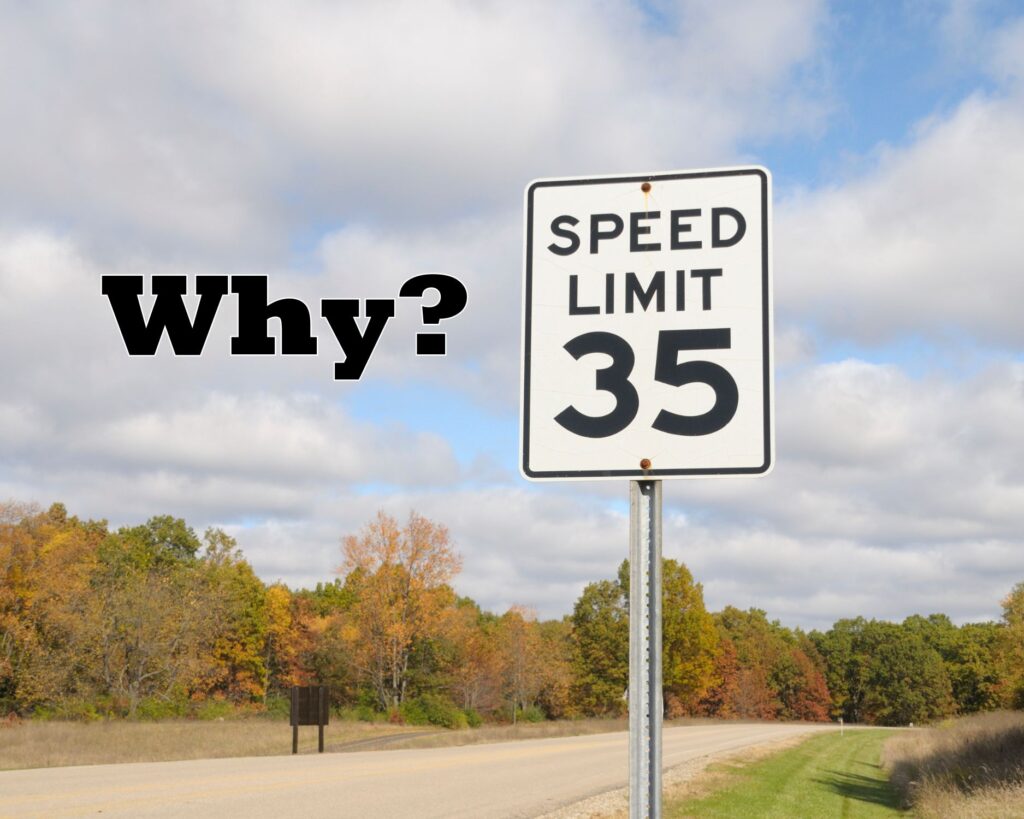Speed limits are a fundamental aspect of road safety regulations in the United States. They play a crucial role in maintaining order and safety on the roads. This article explores the reasons behind the establishment of speed limits, their importance, and the legal basis for these regulations.
Purpose of Speed Limits
Speed limits are set to ensure the safety of all road users, including drivers, passengers, pedestrians, and cyclists. They are based on the understanding that higher speeds increase both the likelihood of accidents and the severity of their consequences.
Safety Considerations
- Reducing Accidents: Lower speeds give drivers more time to react to unexpected situations, thereby reducing the likelihood of accidents.
- Minimizing Impact of Collisions: At lower speeds, the impact of collisions is less severe, which can reduce the number of fatalities and serious injuries.
- Protecting Vulnerable Road Users: Speed limits help protect pedestrians, cyclists, and other vulnerable road users who are more at risk in traffic.

Traffic Flow and Efficiency
Speed limits also contribute to smoother traffic flow. By setting a maximum speed, they help prevent erratic speed variations that can lead to traffic congestion and accidents.
Legal Basis for Speed Limits
Speed limits in the USA are established under the authority of state and local governments. The legal basis for these limits is rooted in the government’s responsibility to ensure public safety.
State and Federal Laws
- State Laws: Each state has its own set of traffic laws, including regulations on speed limits. These laws are enacted by state legislatures and enforced by state and local police.
- Federal Influence: While states have the primary responsibility for setting speed limits, the federal government can influence state policies through funding incentives and national safety programs.
Setting Speed Limits
The process of setting speed limits involves various factors, including road type, traffic density, and the surrounding environment.
Considerations in Setting Speed Limits
- Road Characteristics: The design and condition of a road, including its width, curvature, and visibility, play a significant role in determining safe speed limits.
- Traffic and Accident Data: Traffic patterns and historical accident data are analyzed to set speed limits that enhance safety.
- Urban vs. Rural Areas: Speed limits typically vary between urban and rural areas due to differences in traffic density and road use.
Enforcement and Compliance
Enforcing speed limits is crucial for their effectiveness. This is achieved through a combination of policing, traffic cameras, and public awareness campaigns.
Role of Law Enforcement
Police play a key role in enforcing speed limits, using radar and other technologies to detect and penalize speed limit violations.
Consequences of Eliminating Speed Limits
The idea of removing speed limits entirely might seem appealing to some, especially those who enjoy high-speed driving. However, this concept, when examined through the lens of road safety, traffic management, and societal impact, raises significant concerns. Let’s explore what could happen if speed limits were abolished in the USA.
Increased Risk of Accidents and Fatalities
- Higher Accident Rates: Without speed limits, drivers may be inclined to drive at speeds they are not skilled enough to handle, leading to an increase in accidents.
- Severe Injuries and Fatalities: Higher speeds result in more severe impacts in the event of collisions, leading to an increase in fatalities and serious injuries.
Impact on Road Safety
- Vulnerable Road Users: Pedestrians, cyclists, and motorcyclists would be at greater risk without speed limits, as their safety is heavily dependent on the controlled speed of vehicles around them.
- Safety of Children and Elderly: Residential and urban areas, where children and the elderly are more likely to be present, would become particularly dangerous.
Traffic Flow and Congestion
- Erratic Traffic Flow: The absence of speed limits could lead to erratic driving behavior, disrupting the smooth flow of traffic and potentially increasing congestion.
- Increased Wear and Tear on Roads: Higher speeds can lead to increased wear and tear on road infrastructure, necessitating more frequent maintenance and repairs.
Environmental and Health Impact
- Increased Emissions: Higher speeds generally lead to increased fuel consumption and higher emissions, contributing to environmental pollution and public health issues.
- Noise Pollution: The noise level in areas adjacent to highways and major roads would likely increase, affecting the quality of life for nearby residents.
Legal and Insurance Implications
- Liability Issues: Determining liability and fault in traffic accidents could become more complicated without the benchmark of speed limits.
- Insurance Premiums: The increased risk associated with higher speeds could lead to higher car insurance premiums for all drivers.
Societal Costs
- Economic Impact: The potential increase in accidents and road maintenance would have economic implications, including higher healthcare and infrastructure costs.
- Emergency Services: The demand on emergency services could increase, stretching their resources and potentially impacting their ability to respond to other emergencies.
Further Insights on Traffic Laws and Road Safety
While exploring the topic of speed limits and their importance in the USA, it’s beneficial to consider other related aspects of traffic laws and road safety. LegalKnowItAll.com offers a range of articles that delve into various legal topics, including those related to road safety, though specific articles on traffic laws and speed limits are not currently featured on the site. However, understanding related legal concepts can enhance one’s overall comprehension of the legal system and its approach to public safety.
Broader Legal Understanding
- Property Law and Ownership: Understanding the principles of property law, as discussed in 🌟 Possession is 9/10 of the Law: Unpacking the Adage 🌟, can provide insights into the broader legal principles that also influence traffic laws.
- Legal Responsibilities and Rights: Articles like 🌟 Understanding Your Rights as a Tenant: A Detailed Guide 🌟, while focused on tenancy, touch upon the concept of legal responsibilities and rights, which are also crucial in understanding traffic regulations.
Enhancing Legal Knowledge
For those interested in a legal career or in enhancing their legal knowledge, exploring various topics on LegalKnowItAll.com can be beneficial. Articles like 🌟 Law Schools in Texas: Starting Your Journey to a Legal Career 🌟 provide valuable information for aspiring legal professionals.
While specific articles on traffic laws and speed limits may not be currently available on LegalKnowItAll.com, the site offers a wealth of legal information that can contribute to a deeper understanding of the legal system as a whole. Understanding the rationale behind laws like speed limits is crucial, not only for compliance but also for appreciating the broader objective of public safety and order. For those interested in exploring various legal topics, including those related to road safety, LegalKnowItAll.com is a valuable resource.
As an Amazon Associate we earn from qualifying purchases through some links in our articles.




